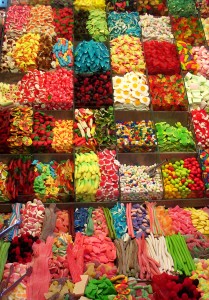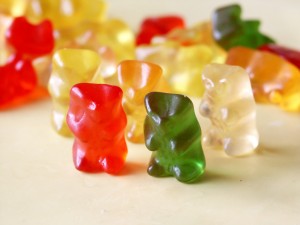You have enjoyed them for years but what’s the difference? Feed your need for sweets with a little background on wholesale candies and confections.
While candy suppliers may know how to get your mouth watering with huge varieties of sugar-loaded treats, do you really know why some products are called confections instead of candy? Is one better quality? Who is more likely to buy which one?The answers might surprise you. FGmarket has a few tips on understanding the differences.
Wholesale Candies and Confections Add Up
With so many different candies and confections out there, understanding what a company is offering you is crucial. If you are browsing through catalogs for gift ideas or like to know exactly what you are getting when you order, it helps to have some perspective on product distinctions.
So think back to geometry class for a moment. Promise this isn’t a pop quiz! But perhaps you remember learning: A square is always a rhombus, but a rhombus is not always a square.
Lucky for the mathematically challenged, the difference between candies and confections is easier to remember. With this logic, we can say:
All candies are confections, but not all confections are candies
Confections Heard Around the World
The word “confection” can be used to refer to any food item that starts with a base of sugar. Gummi bears, sour candy, jawbreakers, chocolate-covered nuts – all confections.
However, confection is a broad term and not all that commonly used outside candy industry professionals like wholesale candy suppliers or manufacturers.
Instead, different countries have their own favorite common word. In America that word is “candy.” The United Kingdom uses “sweets” and in Australia and New Zealand it’s “lollies” No matter your location, all of these are confections.
Included in the confection category are things like chewing gum, ice cream and sorbet which few would consider a true candy. Some sources claim confections extend to pastries, cakes, and cookies as well.
So while it is safe to call any type of candy a confection, not every type of confection is considered candy.
Is Kid-Friendly Always Mother Approved?
Not when it comes to favorite indulgences. The term “confection” is rarely used so it can invoke a different response than “candy.” While frequently the two words are interchangeable, manufacturers and wholesale candy suppliers are aware that colorful candy treats are often associated with children in numerous cultures.
While kid-appeal is a selling point for many great products, companies may market higher end items as “confections” to lend an air of sophistication and suggest quality ingredients.
Gourmet chocolate, caramels, fudge, and divinity are all examples of products that could easily be called candy by many.But with longer production times, more elaborate ingredients, and wide appeal to all ages, a company may choose to call them confections to set them apart from less expensive products that are usually geared toward children like lollipops, jelly beans or novelty candy.
Adults and kids alike respond to these distinctions in tastes, names and packages. With this in mind, you can shop for wholesale candies and confections knowing that the difference between the two is simply some sweet semantics and cultural appeal which can help target a product’s ideal consumer.




Leave a Reply